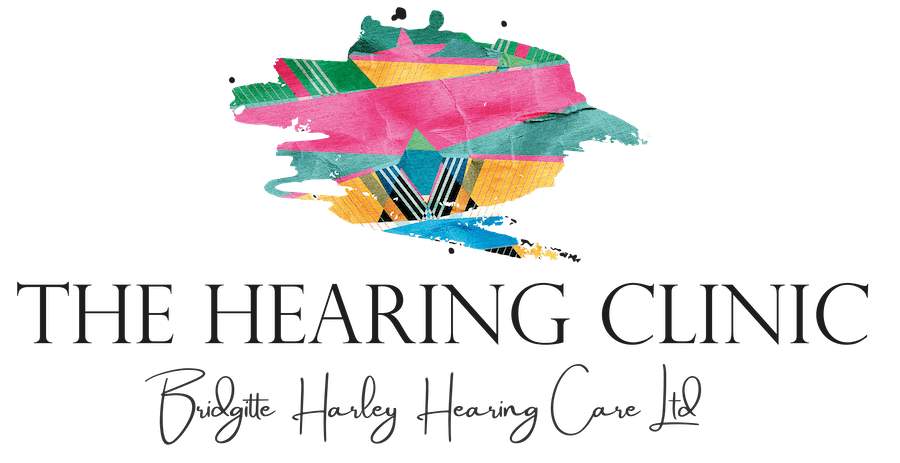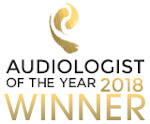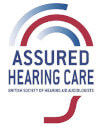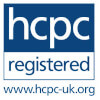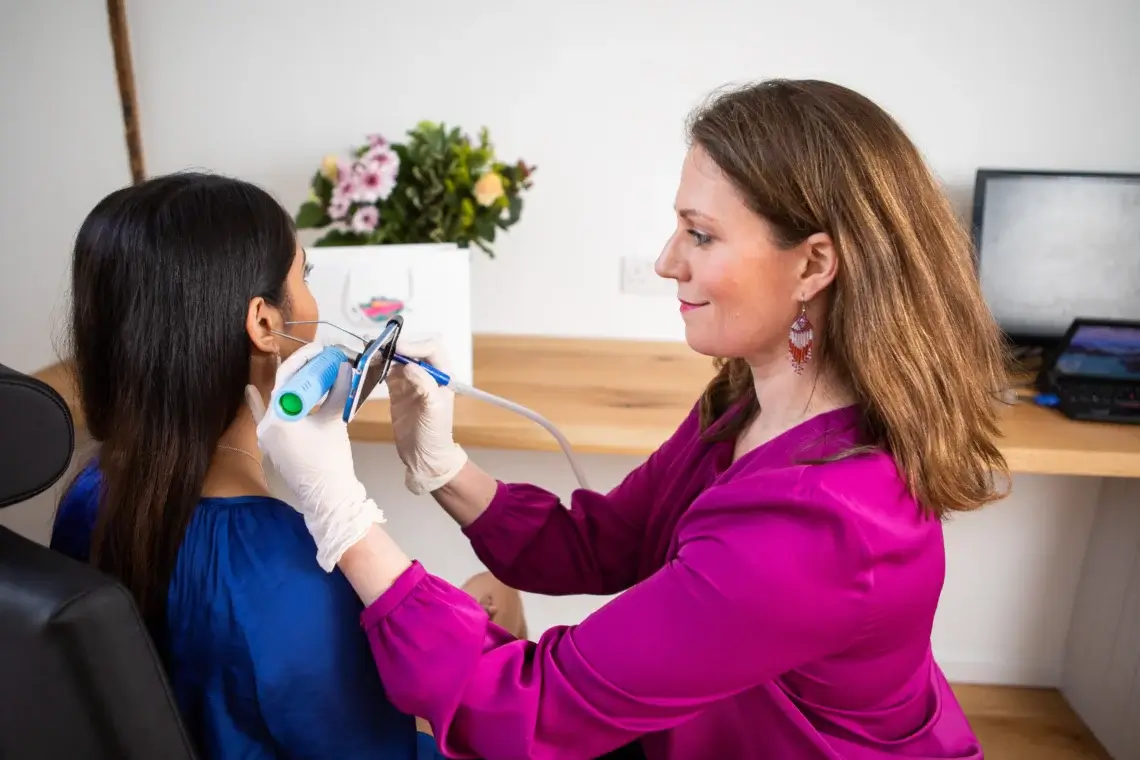
The Ultimate Guide to Endoscopic Earwax Removal.
Endoscopic Ear wax removal
Earwax, also known as cerumen, is a necessary and natural substance produced by the ear to protect and lubricate the ear canal. In normal circumstances, earwax migrates out of the ear canal on its own, carrying with it any dust, dirt, or debris that may have collected. However, sometimes earwax can accumulate and cause discomfort or even impair hearing. When this occurs, endoscopic ear wax removal can be a highly effective solution.
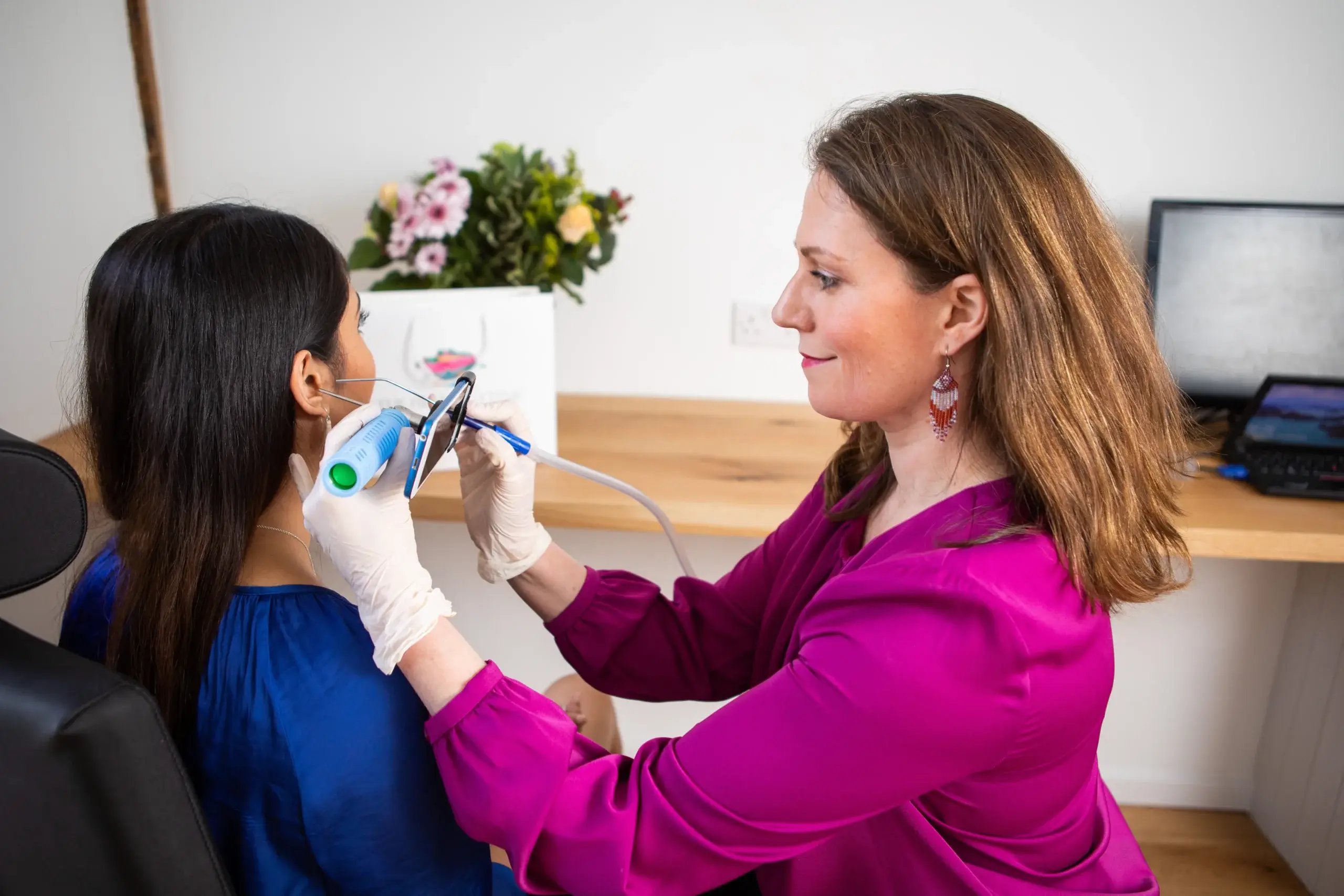
What is Endoscopic Ear Wax Removal?
Endoscopic ear wax removal is a modern and minimally invasive technique used to safely remove excess earwax from the ear canal. It involves the use of a specialised instrument called an endoscope, which is a thin, flexible tube with a light and a camera attached to it. The endoscope allows the healthcare professional to visualise the inside of the ear canal during the removal process, ensuring a precise and thorough cleaning.
During the endoscopic ear wax removal procedure, the healthcare professional carefully inserts the endoscope into the ear canal. The light on the endoscope illuminates the ear canal, providing a clear view of the earwax buildup. The camera on the endoscope transmits real-time images to a monitor, allowing the healthcare professional to see the ear canal in detail.
Using specialised tools, the healthcare professional gently removes the earwax from the ear canal. The endoscope provides a magnified view, enabling the healthcare professional to navigate around delicate structures, such as the eardrum, with precision and care. This minimises the risk of injury and ensures a safe and effective removal process.
Unlike conventional methods, such as ear syringing or earwax drops, endoscopic ear wax removal offers several advantages. It allows for a more accurate assessment of the ear canal and eardrum, reducing the risk of injury. The endoscope provides a clear view of the ear canal, ensuring that all areas of wax buildup are identified and addressed.
Another advantage of endoscopic ear wax removal is its effectiveness in removing stubborn or impacted earwax. In some cases, conventional methods may not be sufficient to remove hardened or deeply lodged earwax. The endoscope allows the healthcare professional to visualise and access these hard-to-reach areas, ensuring a thorough and complete removal.
After the endoscopic ear wax removal procedure, patients may experience immediate relief from symptoms such as hearing loss, earache, or tinnitus caused by the earwax buildup. The procedure is generally well-tolerated, with minimal discomfort or side effects. However, it is important for patients to follow post-procedure care instructions provided by their healthcare professional to ensure proper healing and prevent any complications.
In conclusion, endoscopic ear wax removal is a safe and effective technique for removing excess earwax from the ear canal. It offers advantages such as precise visualisation, minimal risk of injury, and effectiveness in removing stubborn earwax. If you are experiencing symptoms related to earwax buildup, consult with a healthcare professional to determine if endoscopic ear wax removal is the right option for you.
How is Endoscopic Ear Wax Removal Performed?
The process of endoscopic ear wax removal is straightforward and typically follows these steps:
- Our audiologist prepares the patient by explaining the procedure and answering any questions or concerns.
- The audiologist inserts the endoscope into the ear canal and carefully navigates it through the ear, visualizing the earwax and its location.
- Using specialised tools, the audiologist gently removes the earwax, ensuring minimal discomfort for the patient.
- Throughout the procedure, the audiologist may use suction to aid in the removal process and maintain visibility.
Depending on the severity of the earwax buildup, the procedure can take anywhere from a few minutes to half an hour. The patient may experience a sense of relief and improved hearing as the excess earwax is safely extracted.
During the preparation phase, the audiologist takes the time to make the patient feel comfortable and at ease. They explain the entire procedure in detail, ensuring that the patient understands what to expect. They also address any concerns or questions the patient may have, providing reassurance and building trust.
Once the patient is ready, the audiologist begins the procedure by gently inserting the endoscope into the ear canal. The endoscope is a thin tube with a light and a camera attached to it. This allows the audiologist to have a clear view of the ear canal and the earwax buildup.
As the endoscope is carefully navigated through the ear, the audiologist visualises the earwax and determines its location and extent. This real-time visualisation is crucial in ensuring the safe and effective removal of the earwax.
Using tools designed for ear wax removal, the audiologist gently works on removing the earwax. These tools are designed to be precise and delicate, reducint any discomfort or potential damage to the ear canal.
Throughout the procedure, the audiologist may also use suction to aid in the removal process. Suction helps to remove loosened earwax particles.
The duration of the procedure varies depending on the severity of the earwax buildup. In cases where the buildup is minimal, the procedure may only take a few minutes. However, if the earwax is impacted or there is a significant amount of buildup, the procedure may take up to half an hour.
Once the excess earwax has been safely extracted, the patient may experience a sense of relief and improved hearing. The removal of the earwax allows sound to travel more easily through the ear canal, resulting in clearer and more natural hearing.
It is important to note that endoscopic ear wax removal should always be performed by a trained healthcare professional. They have the knowledge, skills, and specialised tools necessary to ensure a safe and effective procedure.
Tips for a Successful Endoscopic Ear Wax Removal
To ensure a successful endoscopic ear wax removal, it is essential to follow these tips:
- Avoid attempting to remove earwax at home with cotton swabs or other objects, as it can push the wax deeper into the ear or cause injury.
- If you suspect a significant earwax buildup or experience symptoms such as ear pain, hearing loss, or ringing in the ears, seek professional help.
- Follow any pre-procedure instructions given by the audiologist such as using or earwax-softening drops.
- During the procedure, try to remain relaxed and cooperative, as this will facilitate the process and reduce discomfort.
- After the procedure, follow any post-procedure instructions provided by the audiologist.
By adhering to these tips, you can maximize the effectiveness of endoscopic ear wax removal and ensure a smooth and successful experience.
Earwax, also known as cerumen, is a natural substance produced by the glands in the ear canal. Its primary function is to protect the ear by trapping dust, debris, and bacteria, preventing them from reaching the eardrum. However, sometimes the production of earwax can exceed its normal rate, leading to a buildup that can cause discomfort and affect hearing.
When it comes to removing earwax, it is crucial to exercise caution and seek professional help. Many people resort to using cotton swabs or other objects to clean their ears, but this can be counterproductive and even dangerous. Inserting objects into the ear canal can push the wax deeper, potentially causing blockages or damaging the delicate structures of the ear.
If you suspect a significant earwax buildup or experience symptoms such as ear pain, hearing loss, or ringing in the ears, it is essential to consult a healthcare professional. They have the expertise and tools necessary to safely and effectively remove the excess earwax.
Prior to the procedure, the healthcare professional may provide you with specific instructions to follow. These instructions may include discontinuing certain medications that can interfere with the removal process or using earwax-softening drops to facilitate the procedure. It is crucial to adhere to these instructions to ensure the best possible outcome.
During the endoscopic ear wax removal procedure, it is normal to feel a slight discomfort or pressure in the ear. However, it is essential to remain relaxed and cooperative, as this will help the healthcare professional perform the procedure smoothly and efficiently. If you have any concerns or experience significant pain, be sure to communicate with the healthcare professional immediately.
After the procedure, the healthcare professional may provide you with post-procedure instructions. These instructions may include using specific medications or practicing certain ear care techniques to promote healing and prevent further earwax buildup. It is crucial to follow these instructions diligently to optimize the results of the procedure.
In conclusion, endoscopic ear wax removal is a safe and effective method to address excessive earwax buildup. By avoiding home removal methods, seeking professional help when necessary, and following pre and post-procedure instructions, you can ensure a successful and comfortable experience. Remember, the health of your ears is essential, and taking proper care of them will contribute to your overall well-being.
When is Endoscopic Ear Wax Removal Needed?
Endoscopic ear wax removal is recommended in various situations, including:
- Severe or impacted earwax: When the earwax buildup is significant and affects hearing or causes discomfort, endoscopic removal may be necessary.
- Eardrum examination: If the healthcare professional needs a clear view of the eardrum for diagnostic purposes, endoscopic ear wax removal can provide the necessary visualisation.
- Infections or foreign objects: When there is an infection or a foreign object lodged in the ear canal, endoscopic removal allows for safe and precise extraction.
- Difficult earwax removal: If conventional methods such as ear drops or syringing have failed to remove the earwax effectively, endoscopic removal may be considered.
Endoscopic ear wax removal is a valuable technique that can help alleviate the discomfort associated with excess earwax and restore optimal hearing. By seeking professional care and following the recommended guidelines, you can ensure a successful procedure and maintain the health of your ears.
Testimonials
“Plenty attention to detail and instructive
Very comprehensive, most helpful appointment. Everything explained very clearly and patiently. And friendly too. Excellent.”
“Experts
After a less than favourable experience at a St. Albans chemist saying they did ear checks and obvious treatments I was nervous coming here.
I need not have worried the staff are friendly , gentle and expert in what they do . I recommend anyone to come here they were superb.”
Ready to experience the best in ear care? Contact The Hearing Clinic today to book your appointment!

